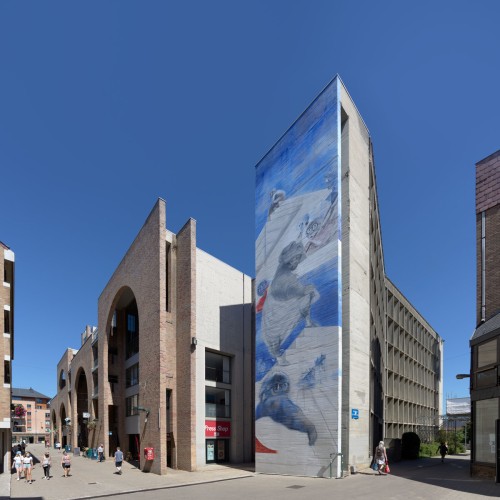
By Toon Grobet, European Master in Architectural Photography
So there I was last Friday, in Louvain la Neuve, in blue sky weather. Facing a building on which my client was about to apply its products to renovate a façade.
When I arrived around 08:30 am the sunlight was just right to shoot the façade which was oriented east.
So I set up the Phase One XT technical camera with the Rodenstock XT-HR Digaron-W 32 mm lens and started making overview shots of that one first.
I than took of the IQ4 150 MP digital back and mounted it on my XF camera to make detail shots with a Schneider Kreuznach 150 mm lens.
Around 9 am the customer’s representative arrived and pointed out that also a part of the south façade would be treated with their products.
For this kind of assignments photographing just the façade doesn’t cut it. The client is looking for more than just an illustration of a before-and-after on ‘a’ wall.
The notoriety of the building and location to which the product will be or has been applied is even more important.
Hence I also had to try to shoot the entire building from the southeast side so it would be clear that those facades belonged to the well known Halles Universitaires of Louvain la Neuve. That administrative building was initially to be build by architect Louis Kahn, who unfortunately declined but recommended his collaborator and pupil Yves Lepère for the design. In 1972 the architects Yves Lepère and Joseph Polet got the assignment.
Louvain la Neuve is a very peculiar, planned town situated 30 km southeast of Brussels in the French speaking part of Belgium
.’ Louvain’ is French for ‘Leuven’, a town in the Dutch speaking part of the country, famous for its catholic university and ‘Neuve’ is French for ‘new’.
The city of Louvain la Neuve was specifically built to house the Université catholique de Louvain, which owns its entire territory.
It came to existence in the 1970s after linguistic quarrels that took place in Belgium during the 1960s and Flemish claims of discrimination at the University of Leuven. The institution was split into the Dutch Katholieke universiteit van Leuven and the French Université catholique de Louvain. The latter built brand new facilities and a new town from scratch, 25 km further to the south of Leuven in Ottignies and called it Louvain la Neuve. The town is built in a valley on top of a huge concrete slab, the ‘dalle universitaire’ which supports the city.
The complete city centre is a pedestrian zone. Cars drive on roads underneath and also park there. Shops are also supplied from the sub terrain level. The two levels are connected with lots of elevators.
The streets on the upper, pedestrian level are rather narrow and lead to several small and larger squares scattered all over town. That lay-out softens the often brutalist character of the structures. The brick and concrete buildings are a sample card of 1950s-1960s and 1970s architectural styles.
Photographing a 7 story building, which extends along narrow streets, without distortion and while keeping the vertical lines straight was a particular challenge.
I opted to make a composite image using the Phase One XT camera’s shift abilities to the maximum, combined with the Rodenstock XT-HR Digaron-W 32 mm lens. The XT-HR Digaron-S 23 mm would give to much distortion.
I put the camera in landscape position and shifted down as much as possible and also to the left (X -10 mm, Y 12 mm) in an attempt to capture the closest corner of the building in its full height and at the same time the outmost right hand corner of the building.
Shifting downward as much as possible was unfortunately not enough to get the top of the closest corner in the frame.
So I also had to tilt the camera upward several degrees which, even with full shift resulted in convergent vertical lines.
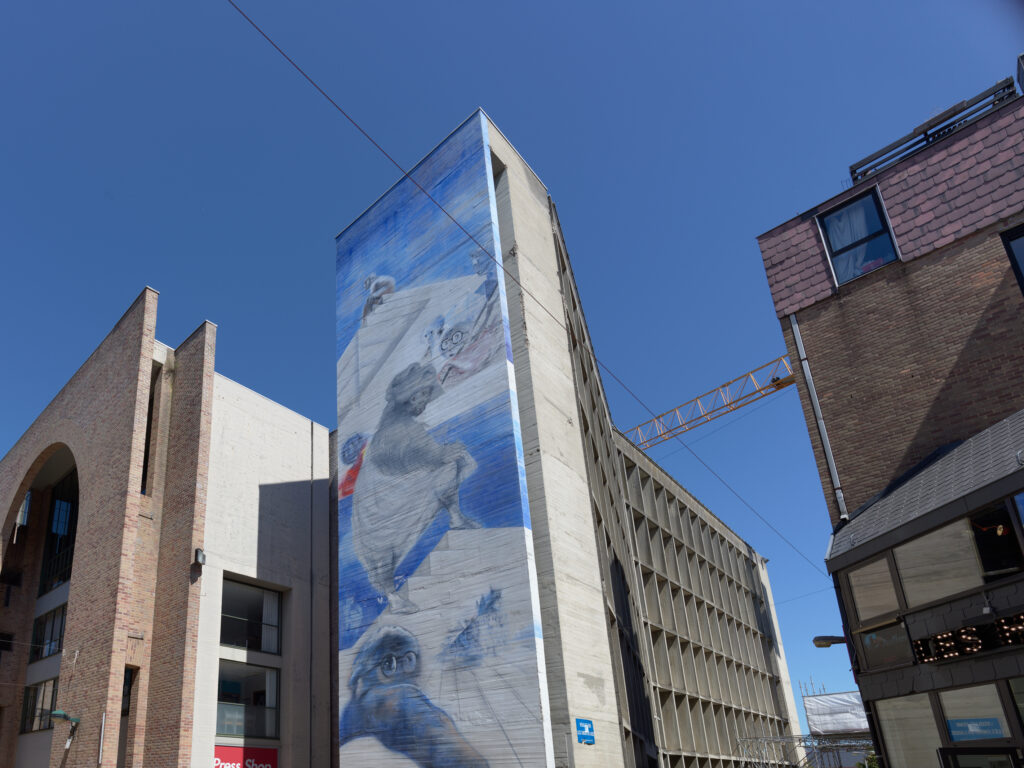
I left the camera in the same tilted position and then shifted to the right while leaving the downward shift as it was. ( X 10 mm, Y 12 mm)
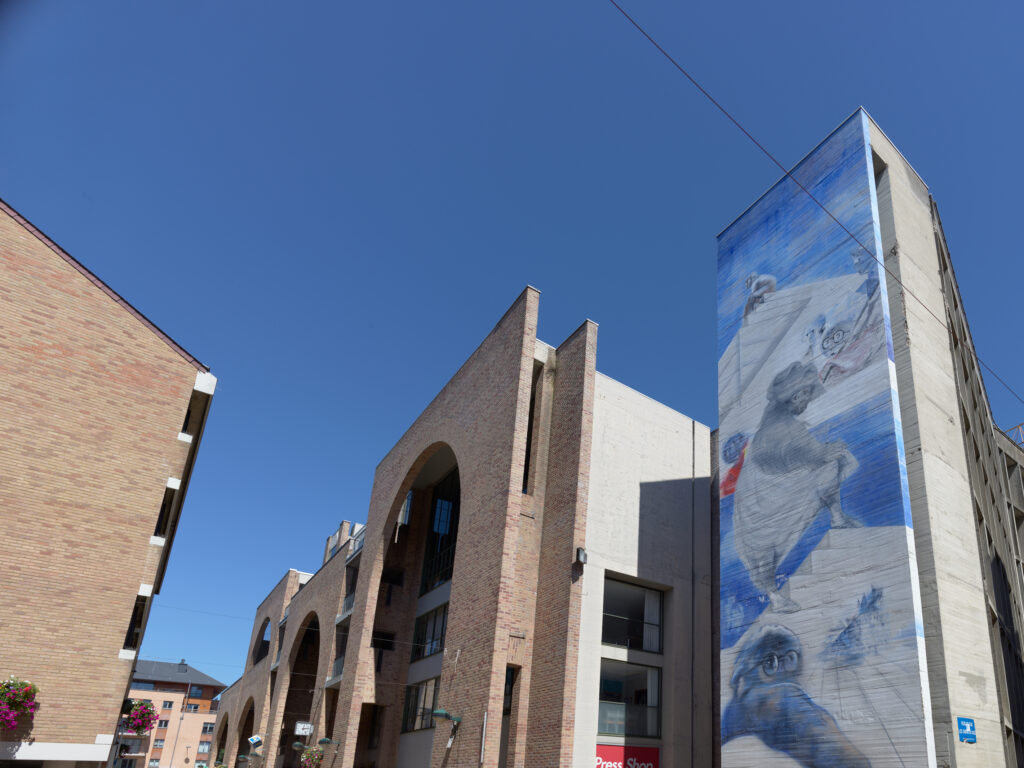
Thus capturing the closest corner in full height again and also the outmost left hand corner of the building. Those two images had a significant overlap in the middle which I would need later to be able to stich them together.
Next I still kept the camera in its tilted position but now shifted upwards and to the left ( X -10 mm, Y -5 mm )
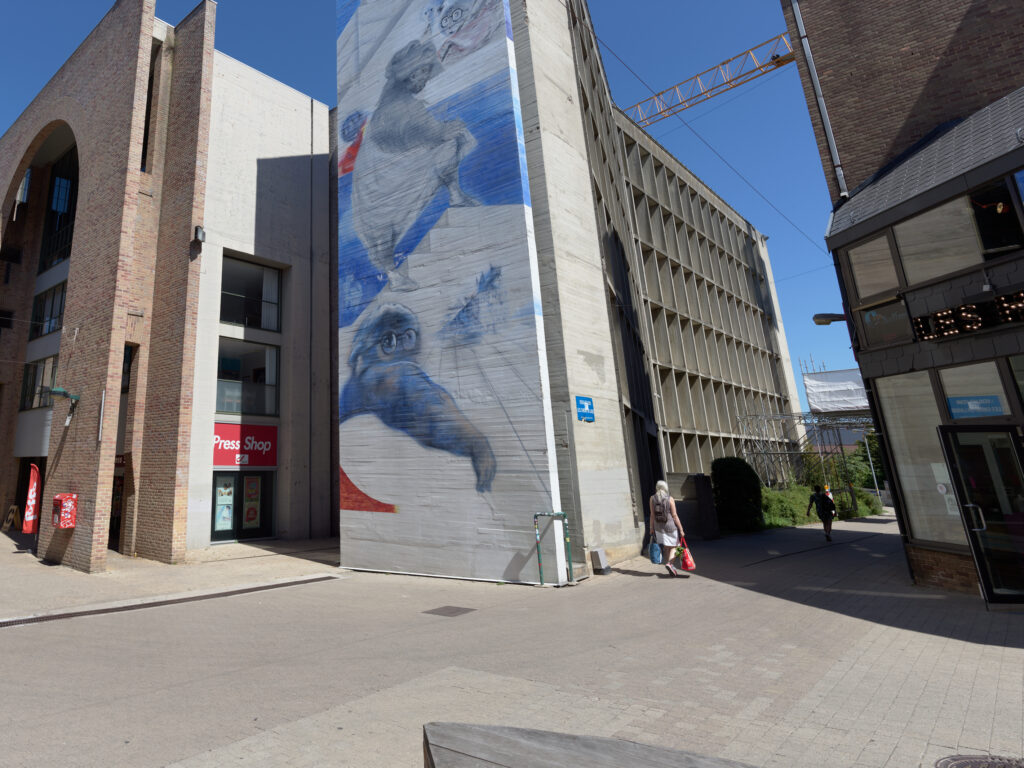
Finally I kept the last upwards shift but shifted to the right. ( X 10 mm Y -5 mm )
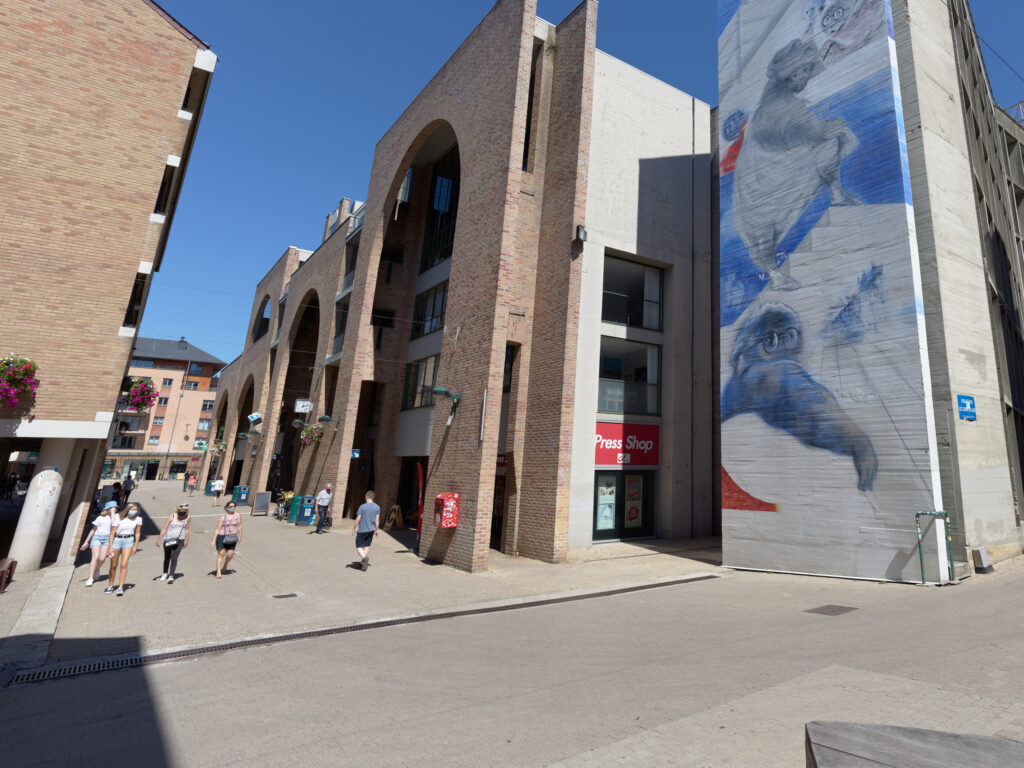
The last two images not only overlapped in the middle but also at the top with the bottom of two former images. Now I had 4 images I could stich.
After every shift I had to shoot an Lens Color Correction shot of a calibrated opaque plate in front of the lens, to compensate for the color and light shift in in the image, caused by shifting the 150 megapixel digital back away from the optical axis.
I was shooting tethered in Capture One 20 on my laptop so I could immediately see the results of the LCC correction in the software and the automatic trapezium tool. With that tool, which works with the digital level and gyroscope in the IQ 4 back, I compensated the tilt in every image to get all the vertical lines perfectly straight.
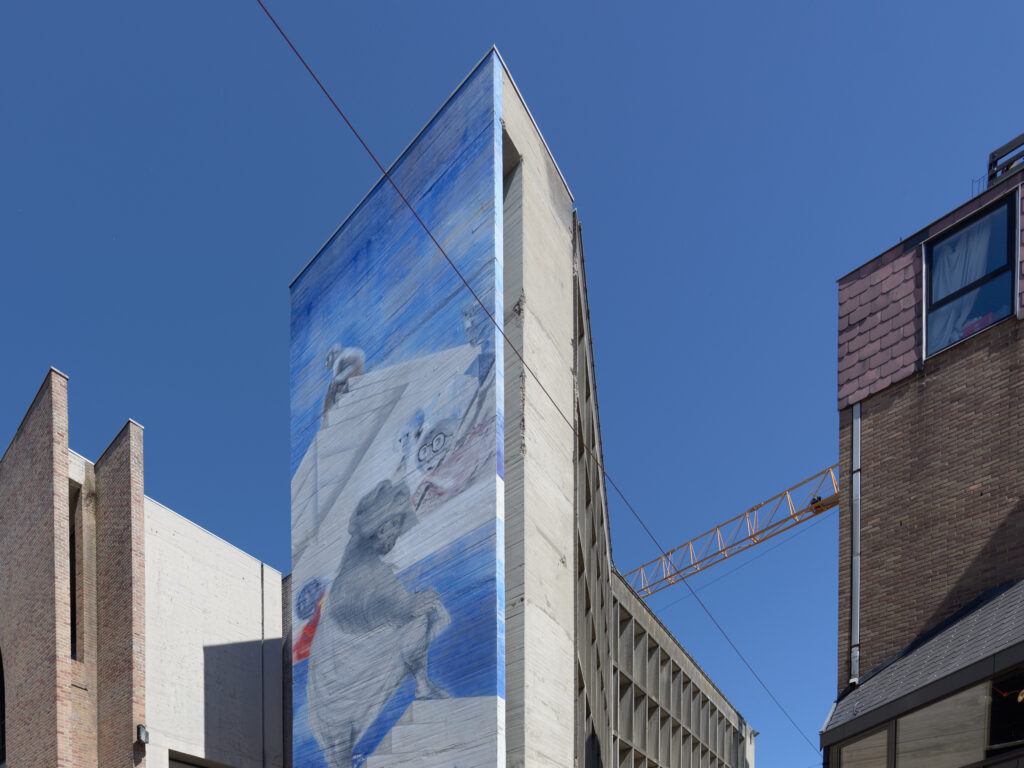
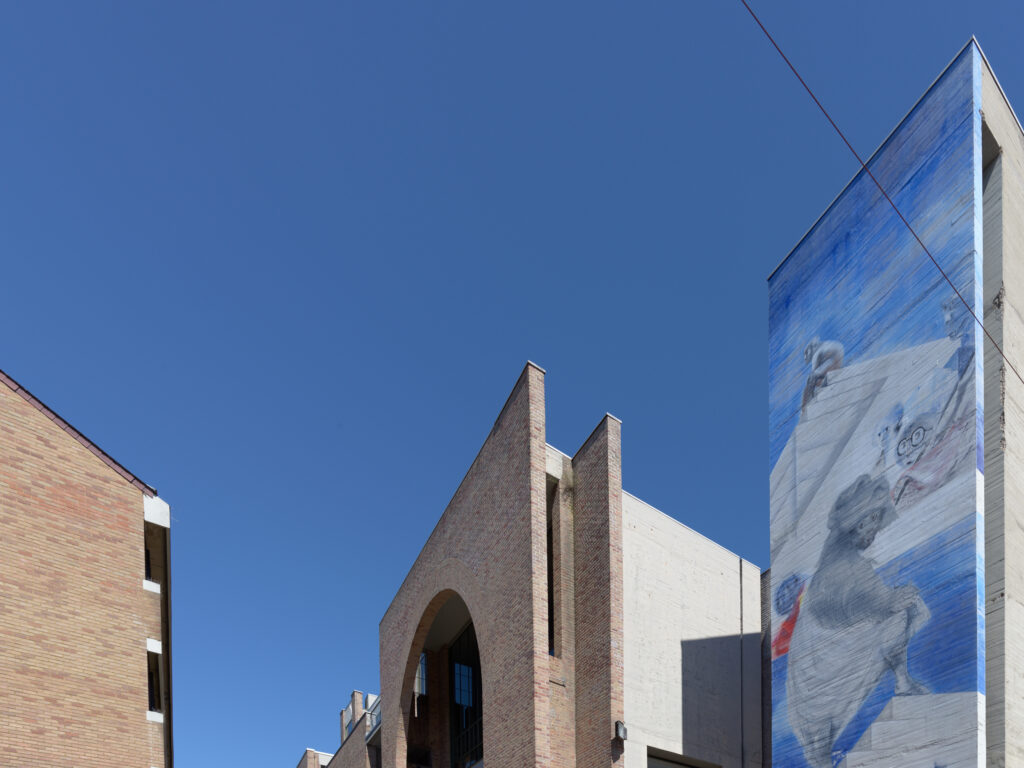
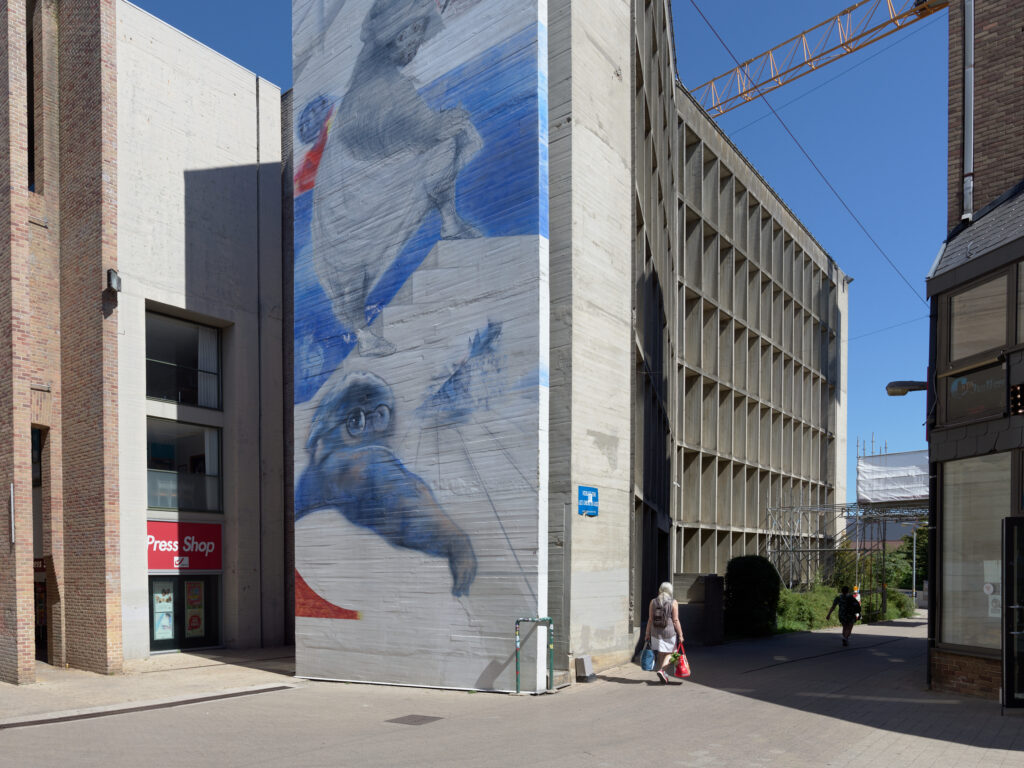
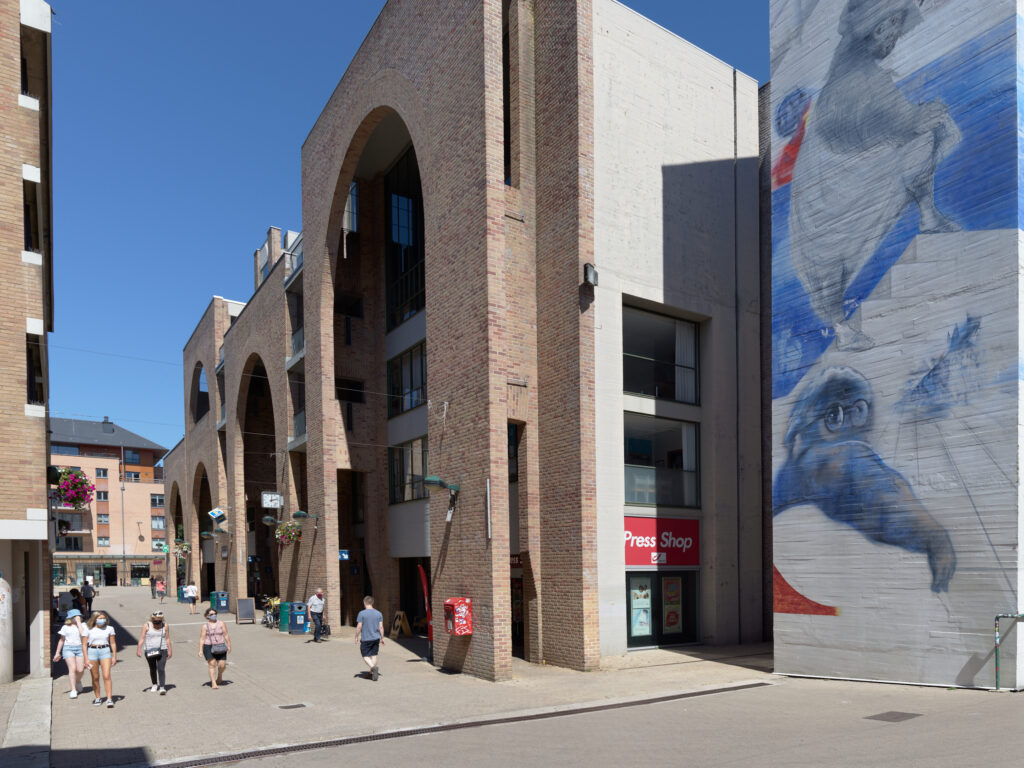
Then I selected the 4 images and via the photomerge-in-Photoshop script in Capture One, I stitched them together to check if all worked fine. The result was exactly what I had in mind.
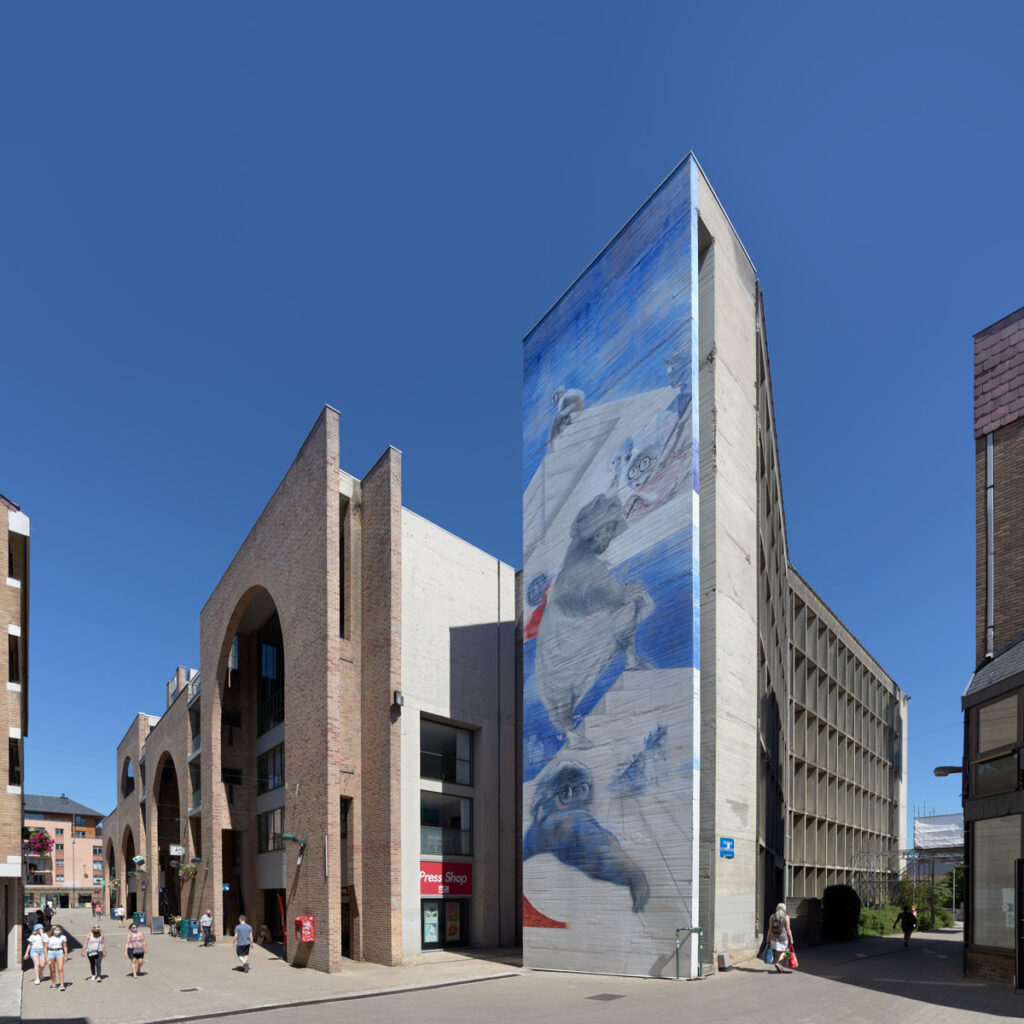
0 comments
No comments yet